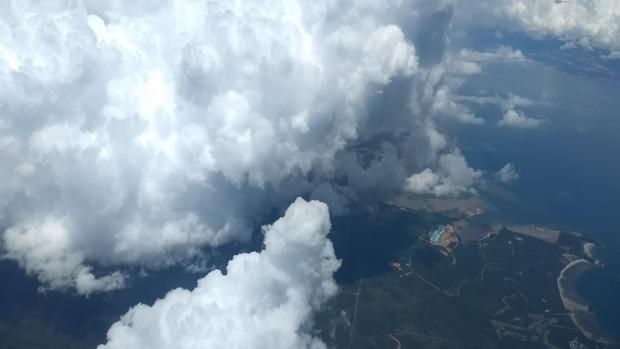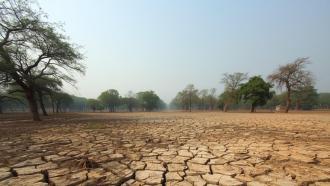
Photo: Vidisha Kulkarni/Research Matters
The ozone layer that envelopes our blue planet and prevents the sun’s harmful ultraviolet (UV) rays from reaching earth, has been severely damaged by us in the last few decades. Man-made chemicals called ozone depleting substances (ODSs) have led to the depletion of ozone, resulting in a “hole” in the Antarctic atmosphere. This “hole” actually refers to the drastic decrease in ozone concentration in the stratosphere above Antarctica. However, as a result of countermeasures taken by the whole world under the Montreal Protocol in 1987, the production and use of such ODSs was reduced in an attempt to save the ozone layer.
But, how successful has this attempt been? In a new study, Dr. Jayanarayanan Kuttippurath and Dr. Prijitha J. Nair from the Indian Institute of Technology Kharagpur, report that the ozone hole appears to be healing based on data collected from India’s own research station in Antarctica named ‘Maitri’. “There are significant changes in southern hemispheric climate in terms of temperature, precipitation, ecosystem, southern ocean ventilation, and others, due to Antarctic ozone loss. The ozone recovery is very likely to revert them”, says Dr. Kuttippurath, stressing the need for a recovery.
The ozone layer is present in the stratosphere (15–50 km) of earth’s atmosphere, much above the height of the clouds. ODSs such as cholroflurocarbons (CFCs) reach the stratosphere and release chlorine/fluorine free radicals that chemically react with the ozone molecules. It is believed that a single free radical can destroy as much as 1,00,000 ozone molecules. When this rapid ozone destruction occurs in the Antarctic polar vortex, a region in the stratosphere, the special dynamical and chemical situation during the spring season there, lead to the formation of ozone hole. It is to address this climate disaster, that the Montreal Protocol was signed by 197 countries with the hope that it will keep the ozone layer intact.
Recent data showed that the ozone concentrations are increasing, indicating a recovery in the ozone hole in spring (September). However, those measurements were not taken completely from the polar vortex. Therefore, these researchers decided to study the ozone layer inside this particular vortex area during both spring (September, October and November) and summer (January) 1979–2013 to examine the long-tern trends in ozone.
Using ozone measurements collected from satellites and ozonesondes—sensors attached to small hydrogen balloons that measure ozone as the balloon rises—the researchers set out to study the chemistry and dynamics of ozone in Antarctica. These ozonesondes are released regularly from research stations in Antarctica, one of them being India’s own station, Maitri, functioning since 1989. “This makes it the first study that uses measurements exclusively inside the Antarctic vortex for long-term ozone trend analysis”, says Dr. Kuttippurath.
The researchers calculated ozone concentration before and after the year 2001, the time when the stratospheric halogen (e.g. chlorine, fluorine) concentration became maximum in the Polar Regions. They found that there was a dramatic decrease in ozone concentration before 2001, whereas a significant increase after 2001 in Antarctica. To further assess the robustness of this ozone recovery trend, they did analyses using different input data to represent various factors that could affect ozone concentration. This gave their results more validity. In this process, they discovered that even after subtracting the natural variability in ozone concentration induced by seasonal dynamics, the ozone recovery was clearly visible.
“While transient ups and downs are to be expected from one year to another, the behaviour of Antarctic ozone trends over the longer term since 2001 reveals clear signs of recovery. Our results robustly suggest that the successful implementation of the Montreal Protocol to protect stratospheric ozone has begun to save the Antarctic ozone hole”, comments Dr. Kuttippurath on the findings of the study.
So does this indicate everything is good? “The ozone recovery process is very slow and it will take another 30–40 years to get back to the 1980 levels. But given that CFC concentrations are decreasing, the positive trend of ozone concentration will continue”, adds Dr. Kuttippurath. Nevertheless, this study highlights the effectiveness of international treaties or cooperation like the Montreal Protocol, for the well-being of all. It also shows how the data from Maitri, India’s Antarctic research station, could be used for meaningful scientific studies.






